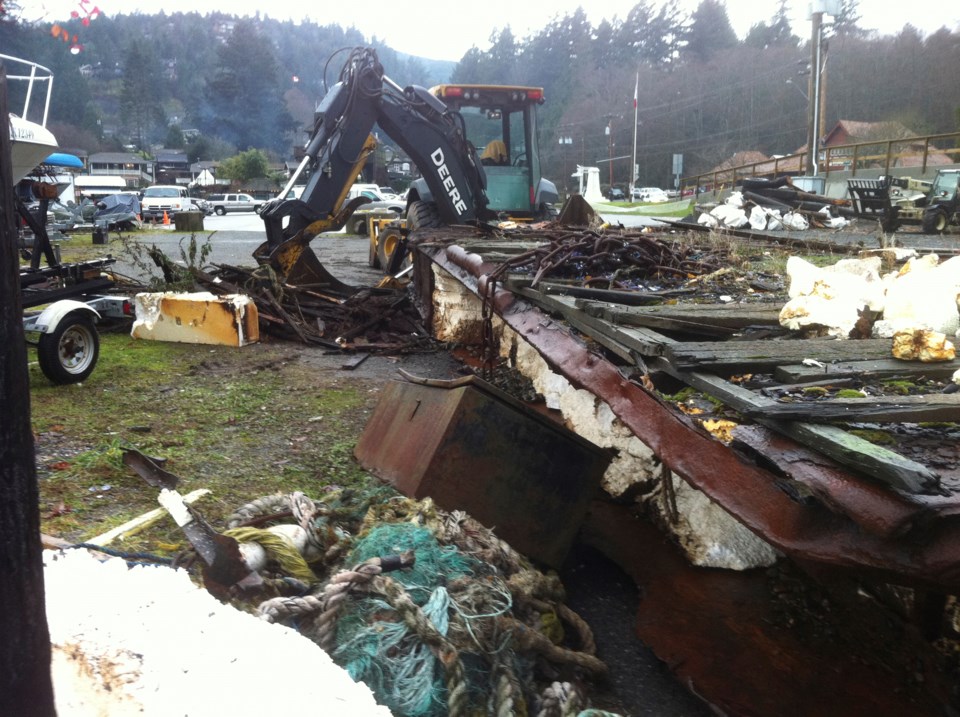Last week, Environment Canada issued a rainfall warning for the Metro Vancouver region, and offered a prediction of sub-tropical storms for three days. This coincided with extreme high tides, and here on Bowen, the Union Steamship lawn turned into a swamp. Storm surges crested over the causeway and four vessels were torn from their moorings in Mannion Bay. Three of these boats ended up beached on or near Pebbly Beach.
Brian Biddlecombe, owner of Cormorant Marine, towed one of the dislodged boats from Mannion Bay to the Government Dock.
“This was really a typical winter storm,” he said. “And the boats that ended up on the beach, well, that is a typical case where someone puts a boat in the water on a nice day and thinks it is going to stay there. Things can get a lot worse. If it were colder, then there could be sea-ice and it would be a lot more miserable to deal with things.”
Senior Bylaw Services Officer Bonny Brokenshire agrees with Biddlecombe. Similar storms happen every winter, she says, and no matter how well secured, a boat can become unmoored in severe weather and tidal event.
“There is some concern though, because one of the boats that landed on the beach had an exposed motor and so it is possible that deleterious substances could leak into the marine environment,” says Brokenshire. “And that particular piece of shoreline has been identified as a potential spawning ground for forage fish, so protecting it from contamination is a priority.”
Brokenshire adds that, while the work done to reduce the number of derelict vessels in Mannion Bay can not necessarily prevent boats from washing ashore, it is getting easier to ensure that when they do, they are cleaned up.
“Most of the mooring buoys are now marked with the names and phone numbers of the boat owners,” says Brokenshire. “We also do an inventory every six months of all of the vessels in the Bay and we know whose boat is whose. Owners are not anonymous any longer, so we can hope that this will encourage people into taking more responsible precautions.”



